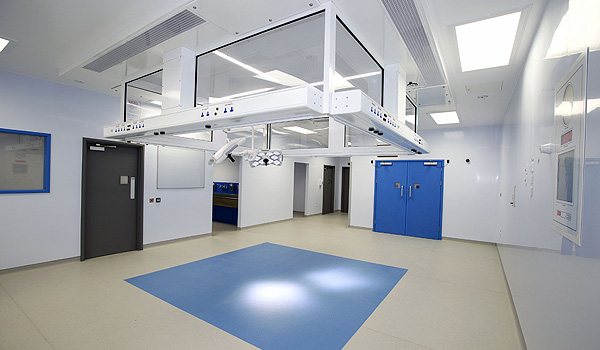
Chesterfield Royal Hospital
To date IHP have completed five projects at Chesterfield Royal Hospital, including extensions to the Endoscopy and Emergency Departments, infrastructure upgrades, provision of a new HBN compliant, laminar flow theatre and sequential refurbishment of the complete suite of 12 existing operating theatres whilst maintaining full operational capacity throughout the works.
Facts and figures
- Client: Chesterfield Royal Hospital NHS Foundation Trust
- Design team: The Manser Practice as Architect, RPS as MEP Engineer, Alan Johnston Partnership as C&S Engineer
- Type of facility: Acute
Key features
- Delivered in a live hospital environment
- Theatre refurbishment delivered in 13 phase programme with over 100 planned services shutdowns
- No lost operating lists throughout the works
- Exemplary engagement with clinical staff throughout
- A substation crucial to the safe operation of the hospital was replaced in a marathon 36-hour operation
Project achievements
The team have delivered a programme of complex schemes within highly serviced, operational clinical environments, each of which have been delivered within the agreed timeframe, cost parameters and to the required quality. Delivering works within such environments presents numerous challenges, requiring high levels of flexibility and constant communication, such an outcome is deemed to be outstanding given the nature of the works completed.CHRIS TANN, ASSOCIATE DIRECTOR OF FACILITIES
Constant communication, visibility and listening were vital to working in a live hospital environment.
A process of continuous review and improvement meant that each project phase and subsequent projects within the scheme have benefitted from lessons learnt.
During the theatre refurbishment programme, new air handling plant, to serve each individual theatre, had to be integrated into existing plant rooms. This was quite a challenge as the existing units served two theatres each and could only be removed on completion of the second of each theatre pair.
Access to the works was extremely restricted, and our site compound was located remotely at the perimeter of the hospital site.
A substation was crucial to the safe operation of the hospital was replaced. The electrical substations at the hospital were beginning to fail due to excessive load and needed to be upgraded, to support the refurbished operating theatres. However, it was critical that it was done with minimal disruption to the electricity supply.





